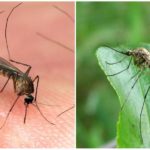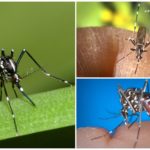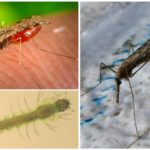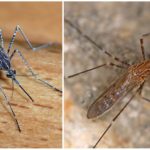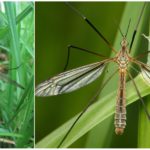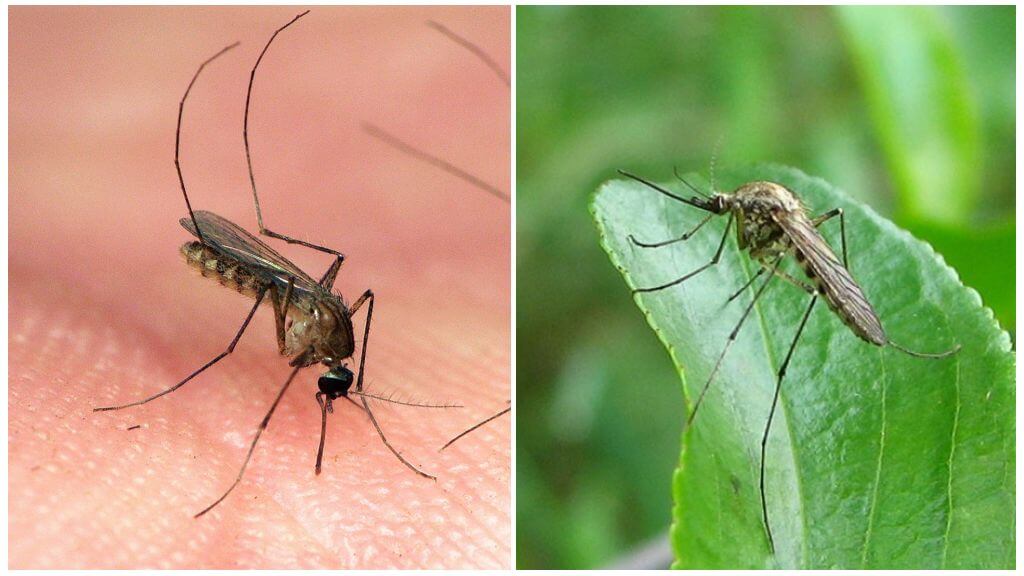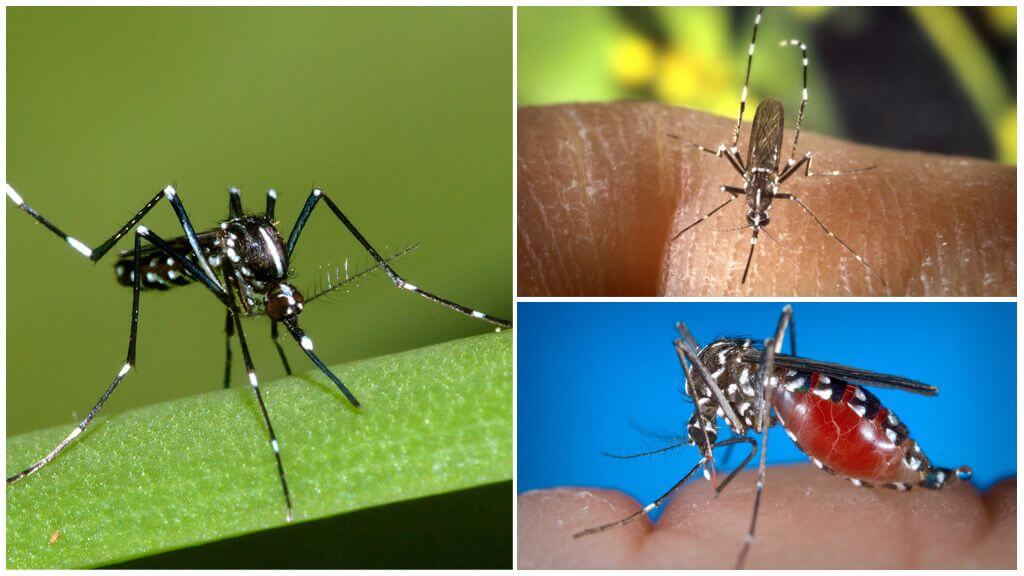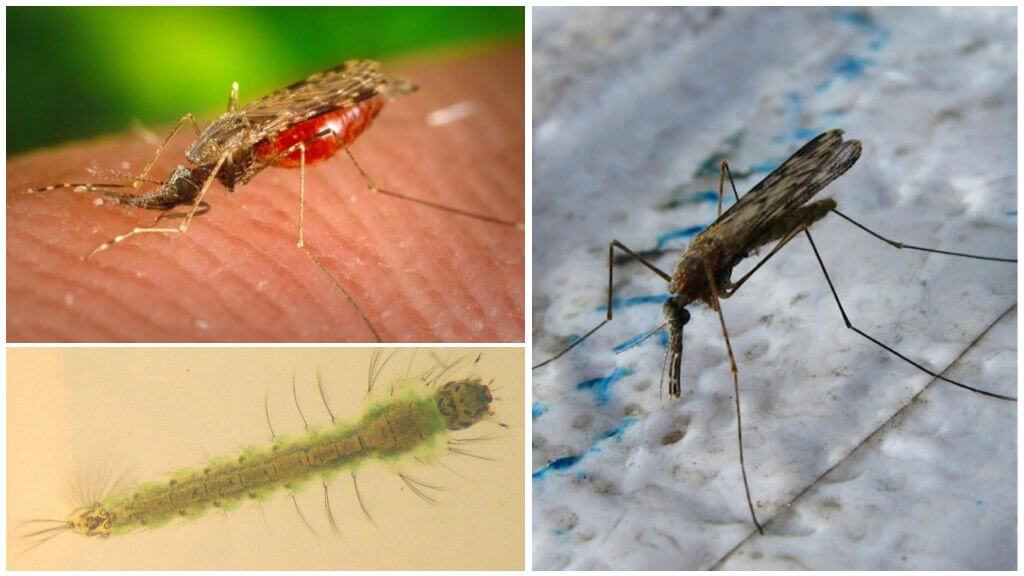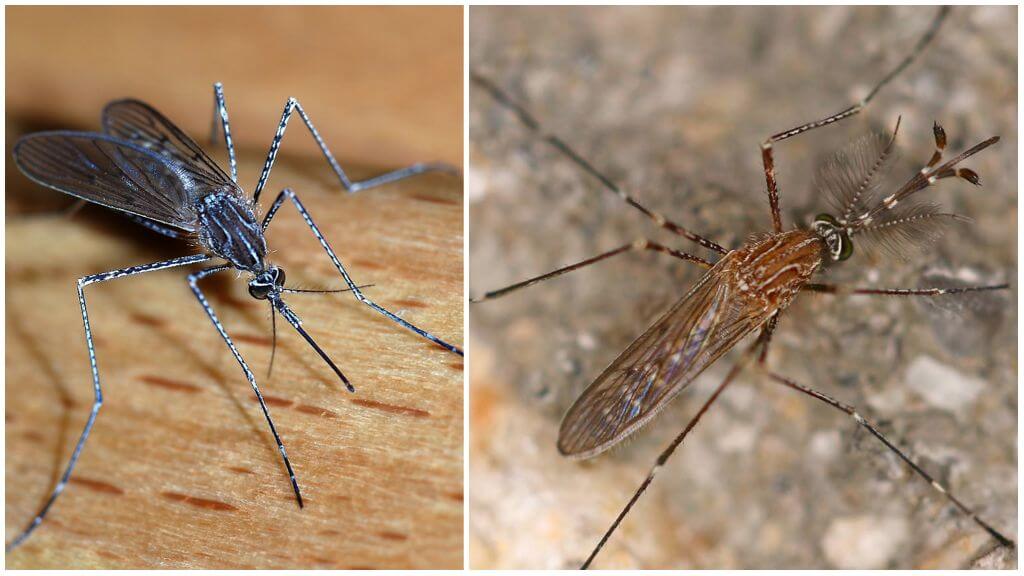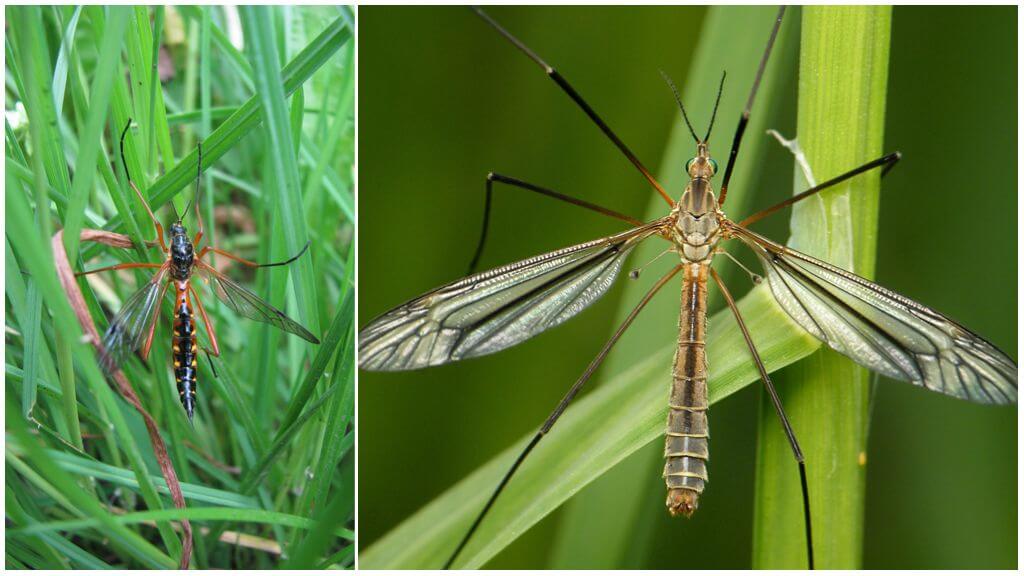Description and photos of mosquito species
Content
- Mosquitoes of the kind of kuleks
- Representatives of the species Aedes (kusaki)
- Malaria mosquitoes
- Burning mosquito
- Dollypods
Mosquitoes - one of the most common insects of the globe. They live almost everywhere, the only exception is the territory of Antarctica. Science knows about 3 thousand species of such individuals. And mosquitoes are both completely harmless and very dangerous for humans. All of them are united by the family of Diptera insects, a characteristic feature of which are oral organs that look like a case.Jaws with long and thin teeth are located in it. Due to this structure of the mouth apparatus, the insect is able to feed on plant sap, flower nectar, and even human blood (you can see them in more detail in the mosquito photo below).
Mosquito species
In nature, there are various types of mosquitoes. The family of Diptera insects can be divided into 3 subfamilies:
- Culicinae (non-malarial mosquitoes). Includes insects of the following genera: Uranotaenia and Aedes (bite), Psorophora and Culex (real mosquitoes), Orthopodomyia and Coquillettidia, Mansonia and Culiseta, Haemagogus and
- Malaria mosquitoes. This subfamily combines genera: Bironella, Anopheles, Chagasia.
- Toxorhynchitinae, genus Toxorhynchites.
Kinds of mosquitoes in Russia
About a hundred species of representatives of the dipterous family inhabit the territory of the Russian Federation. The most common are the following mosquito species.
Kulex
The genus of kuleks (Culex) has more than 1000 species of mosquitoes, and only 100 of them are registered in Russia. The most famous is the Piskun mosquito, which lives almost everywhere. It is from his bites people suffer during outdoor recreation or walking in the park.
The body of an adult individual reaches 3-8 mm.The representative of this type has a pair of wings up to 4 mm long, with narrow black bristles. Mosquito structure the male differs from the female in a more fluffy antennae (the photo of the mosquito near is shown below).
Interesting!
Bloodsucking are exclusively female kuklys. Therefore, finding an individual with a red belly, it becomes clear that this is a saturated female. And insects feed the blood of not only man, but also of animals and birds. For the same reason, pyskunov are carriers of dangerous diseases: Japanese encephalitis, meningitis, eczema, urticaria, filariasis.
Males are real "vegetarians" due to the fact that their oral apparatus is much weaker (the length of the proboscis is noticeably less than the length of the whiskers). Therefore, they prefer plant foods, feeding on floral nectar and plant sap.
Thanks to the proteins and gland contained in the blood, the female individuals are able to lay eggs. They make masonry in standing waters, which can be not only forest swamps and lakes, but even the most ordinary puddles. Egg laying resembles a raft moving on the surface of the water, which can contain up to 3 dozen eggs.After some time, it sinks to the bottom. The formation of eggs takes from 1.5 to 8 days (depending on water temperature). Emerged from the egg larva undergoes several molts, after which it pupates. After a few days, an imago or an ordinary mosquito appears from the pupa.
Nipper
Representatives of the species Aedes (lumps) live mainly in the tropics and subtropics, preferring forest zones. Able to tolerate very dangerous diseases, such as yellow fever, Zika virus or Dengue fever.
On a note!
One of the most well-known hawkers of such diseases is the yellow-heel bitter. Medium-sized insects (up to 7 mm) have a unique black and white color. And white stripes marked all the organs of the body, including the limbs.
The eggs of the female are laid in the lowlands, where during the thaw water accumulates. Initially they are white or yellowish in color. With the development of begin to darken, acquiring a brown tint. Larvae appear and live in water, feeding on algae, dead plant tissues and microorganisms. After some time the larvae pupate and are selected on the surface of the reservoir.In the event of a molt, adult individuals emerge from them, hiding in shelters for some time. Insects are waiting for the moment when their wings spread, and the cover finally hardens.
No less dangerous is the tiger mosquito Aedes albopictus. This is a tropical black mosquito with bright old bands located all over the body, it is found mainly in Asia, and has recently been seen in Russia. It is characterized by aggressiveness and mobility: it is able to fly at a low altitude, but at high speed, biting people in bare parts of the body. The size of the insect reaches 5 mm, and the difference of the female from the male in extremely large sizes. It is a carrier of dangerous viral infectious diseases (malaria, typhoid fever, dengue fever or Zika virus).
Anopheles
Malaria mosquitoes are also one of the most dangerous. The ability to carry malaria plasmas (human parasites) is what makes these insects dangerous. On the territory of our country, representatives of this species are found in the middle lane.
The description of insects is in many respects similar to ordinary pussy eaters. If you look at the photograph, the adult Anopheles can be recognized by the elongated elongated body, relatively small head and long proboscis.On the wings along the veins there are scaly plates.
On a note!
A distinctive feature of this type of insect is a pair of long antennae, which are located near the mouth apparatus. In addition, the Anopheles have longer hind limbs than the Piskuns. In females there are segmented tentacles located on the head, the length of which is comparable to the proboscis, while in the representatives of the culexes they are much shorter.
The menu of females and males is also different: the food for the former is blood, the latter feed on exclusively vegetable juices. A female mosquito lays up to two hundred eggs on the surface of the water, where they develop over a period of 2-3 days. At lower temperatures, the process may be delayed by 15-20 days. Dangerous bloodsuckers have the same developmental stages as ordinary mosquitoes (egg, larva, pupa, imago). Mosquito mosquito bite the sensations are also no different from the attacks of the habitual piskun.
Burning mosquito
Culiseta - the so-called burning mosquito in Latin, which can be a carrier of tularemia (a disease characterized by intoxication, high fever, swollen lymph nodes).
Beige slightly yellow mosquito grows to a length of 12 mm. It has thin legs with white rings on the curves of the lower leg and thigh, as well as dark spots on the wings. Males are distinguished by a long shaggy mustache and a relatively large proboscis with white patches. Adults have spiracle setae. They prefer to live near forests.
Dollypods
It is easy to guess from the title what a mosquito from a centipede looks like. Caramor (Tipulidae) are gigantic in size. The “visiting card” of insects is long legs. In length, red mosquitoes reach 6 cm, some individuals grow up to 10 cm. In addition, centipedes can have a very colorful color: the Siberian Tipulidae mosquitoes have a red belly, Indian individuals have a black-orange shade, even an orange mosquito.
Dollypods prefer areas with high humidity, settling in swampy areas or near the forest thicket. Giants do not pose a danger to humans, due to the fact that they do not use blood for food. In the diet of such insects are present exclusively juices of plant origin and dew. However, a large accumulation of tenons can cause serious damage to agricultural land.Moreover, the larvae of the caramora, which use the tender roots of young plantings, are particularly gluttonous.
A similar lifestyle is typical for mosquito-bellies, which most often can be seen on the coast of Azov.

